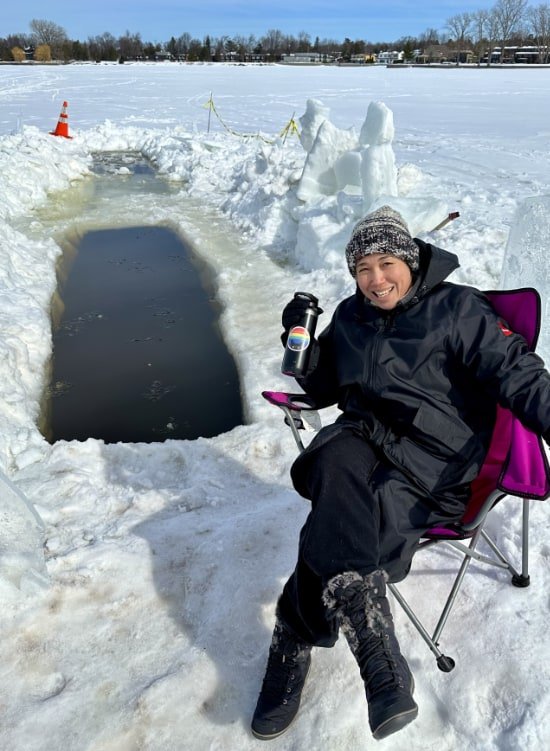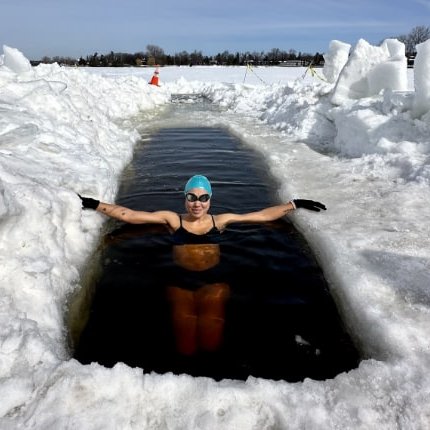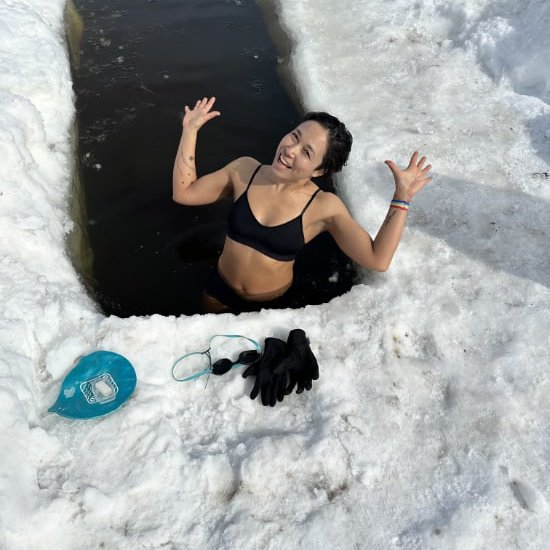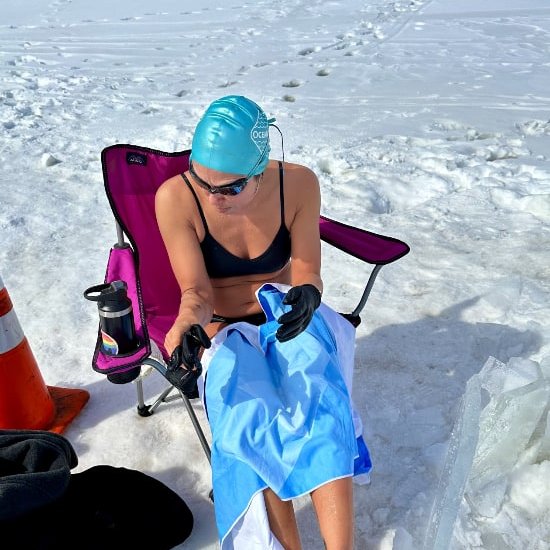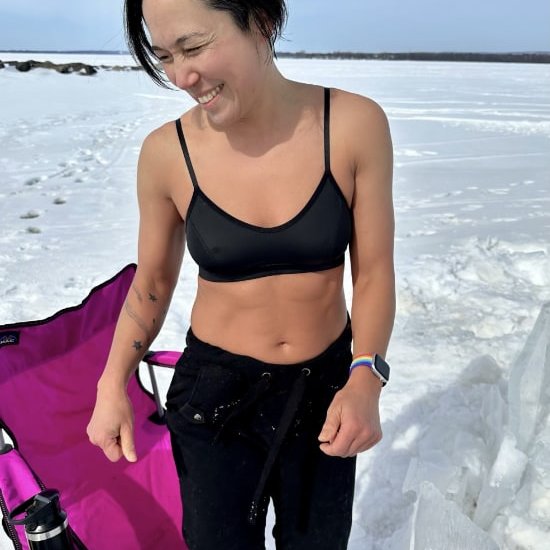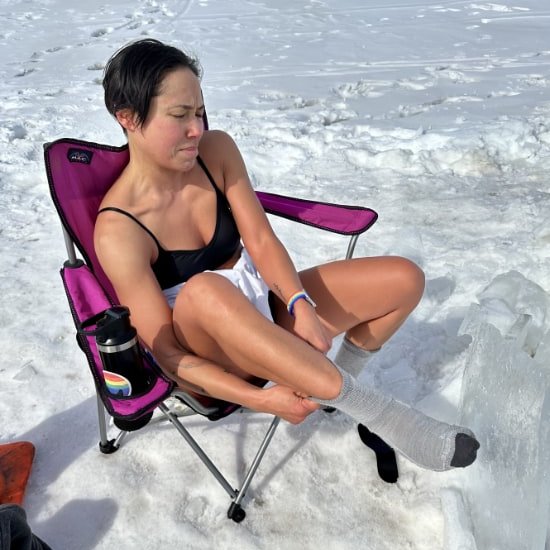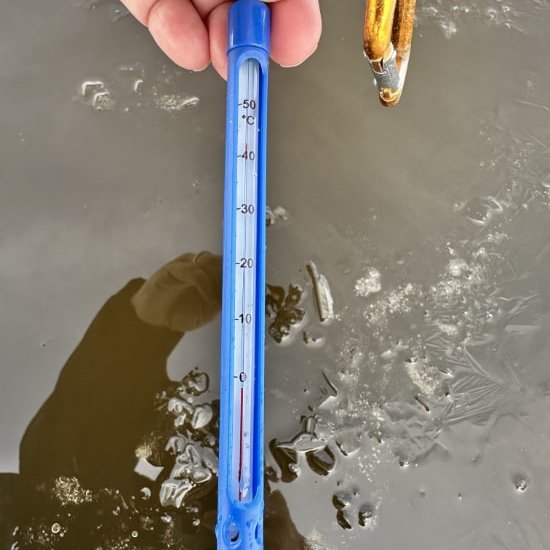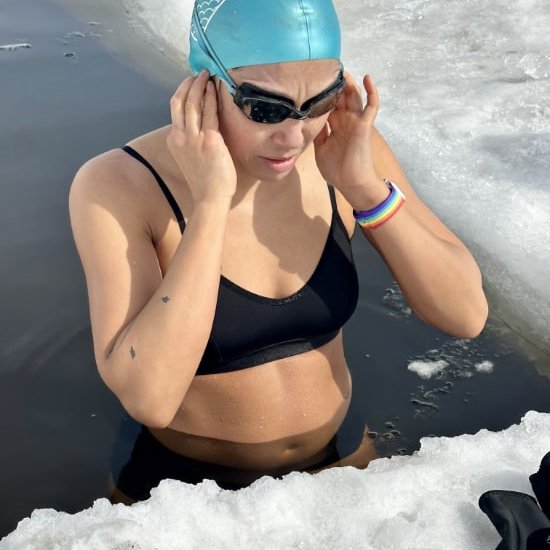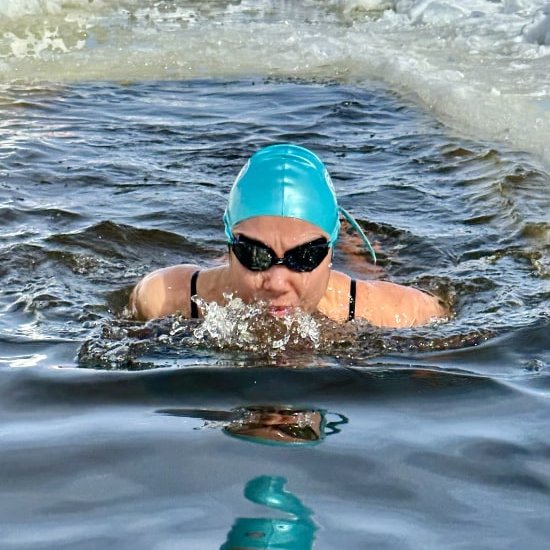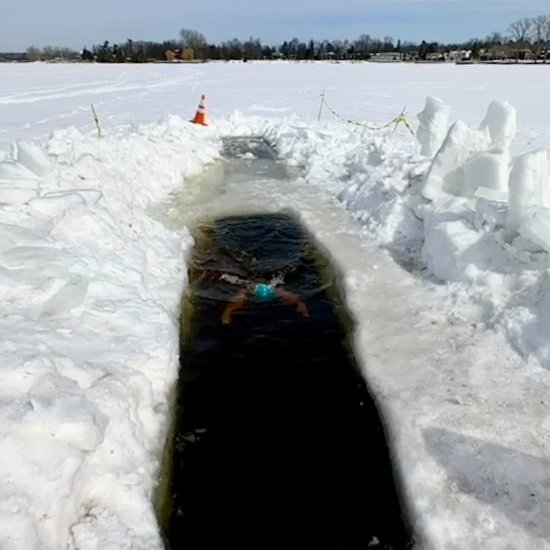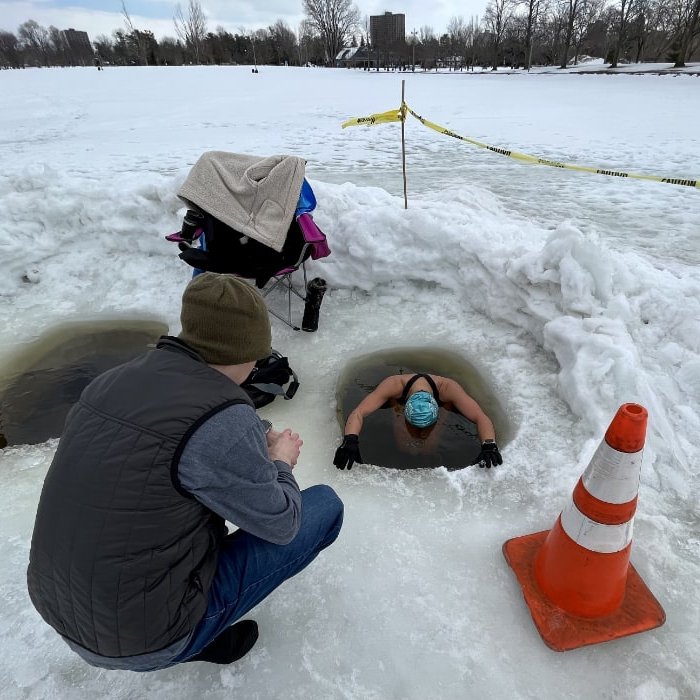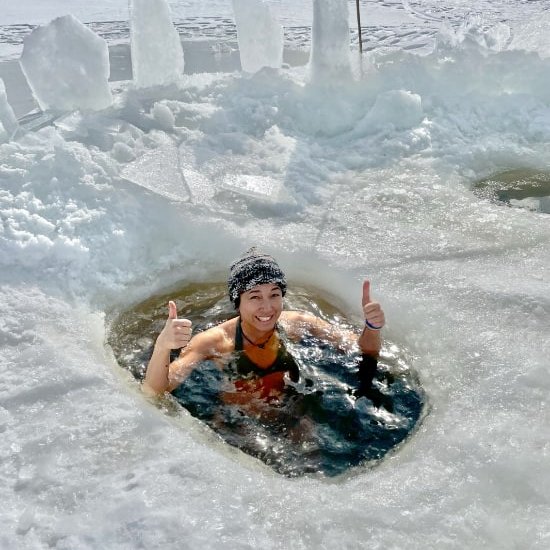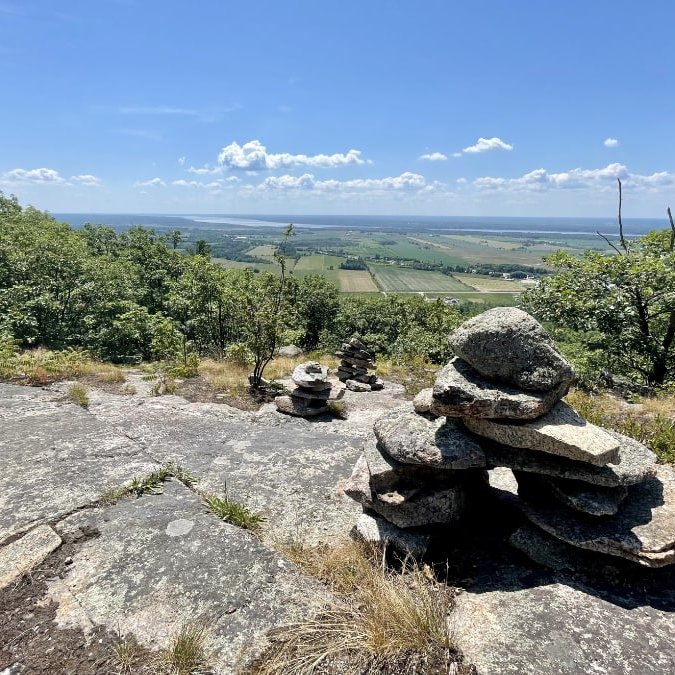A few weeks ago, I challenged myself to try doing my first cold water immersion outdoors in water surrounded by ice which I blogged about. I was surprised at how calm I was in the 0C and how easily I had been able to adapt to the colder water temperature, even managing to make it to 5 minutes (my outside push time).
This past weekend, I decided to push myself a little harder and wanted to try the swimming lane that was also cut into the ice n the same spot. This time, however, the surprise came from how much harder it was than simply sitting in immersed in it.
Preparations for My Cold Water Swim
In addition to doing all the various home work to mentally prepare for cold water work (as described in my previous blog post), I changed up my gear slightly to allow me to swim more comfortably. Instead of wetsuit socks that aren't quite tight enough to prevent water from swishing in, I wore water shoes that were a more snug fit and better for swimming, though not as insulated. I also donned my swim cap instead of a hat, and put in swimming ear plugs, which prevent water from getting in the inner ear while swimming, which also has the secondary benefit of preventing heat loss through the ears. I could have also put in nose plugs, which would have also helped, but decided not to bother. In retrospect, I might have appreciated having them. I also wore mirrored goggles to see in the water and for protection against the bright sun. I didn't bother with the putting on the personal stick-on warmers this time either since last time, my recovery was pretty smooth. This was also something I might have appreciated having again this time around.
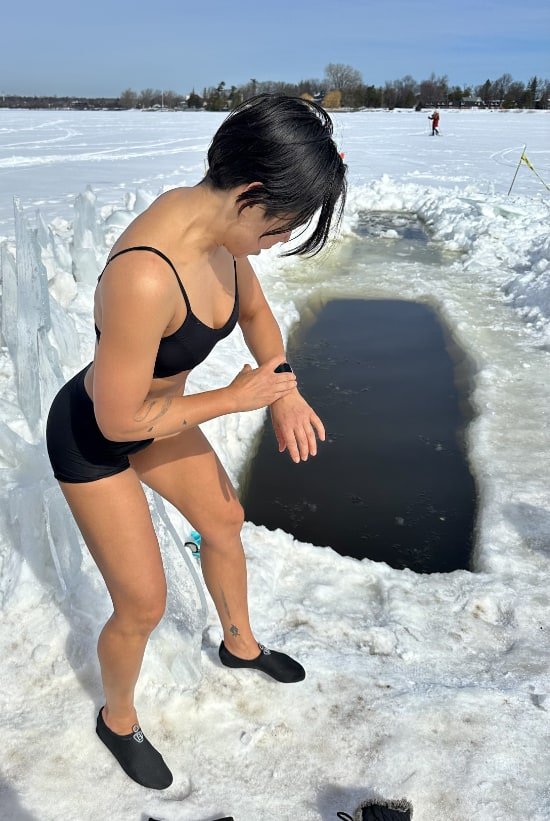
Easing into the Swim
I started the immersion gently easing myself in getting all the way up to my chest, giving me time to put on my gloves, cap, and ear plugs. I then dunked myself in up to my neck and in no time at all I was already at 3 minutes. I noticed that I was wasn't quite in the mindful state that I was in last time since I was so focused on preparing for the swim.
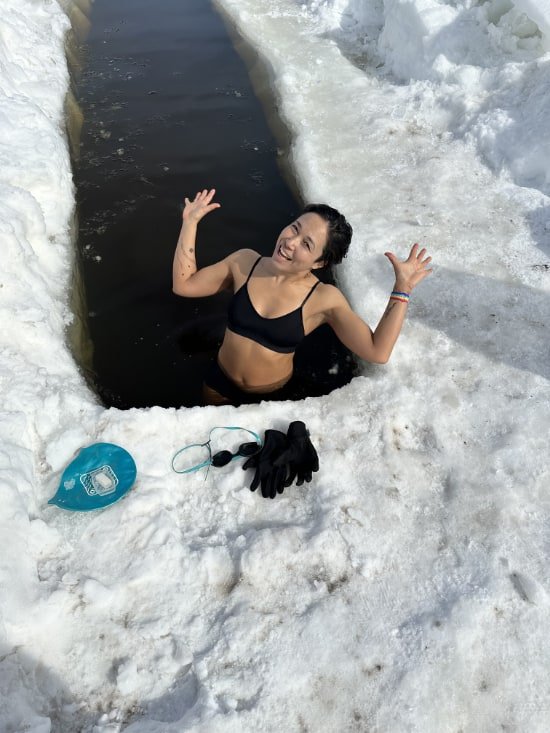
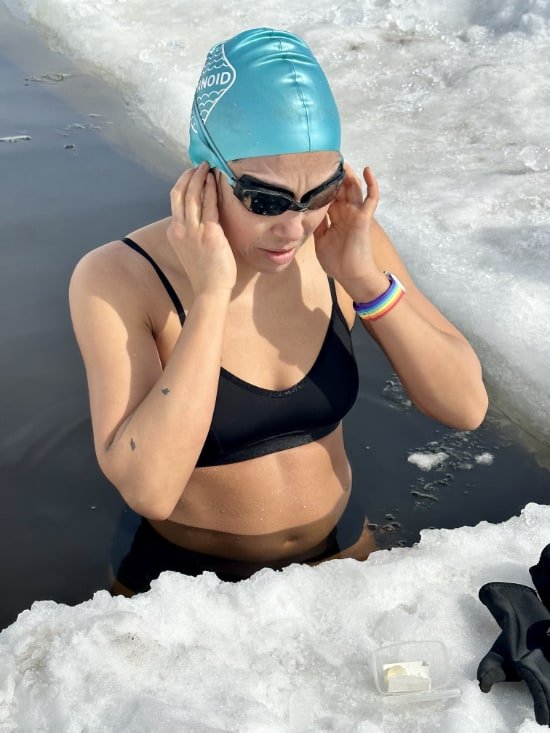
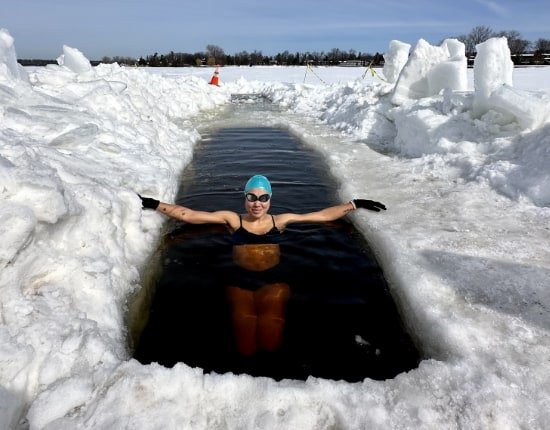
Once I felt that my heart rate and slowed and the initial symptoms of cold water shock subsided. I tested my arms and legs, gently moving them, making sure that they were functioning well. Even if I had had any issues with swim failure, a risk that comes with cold water shock, my friend Lisa, a former life guard, was also there to help me out, and the water was still shallow enough that I was able to tough the bottom.
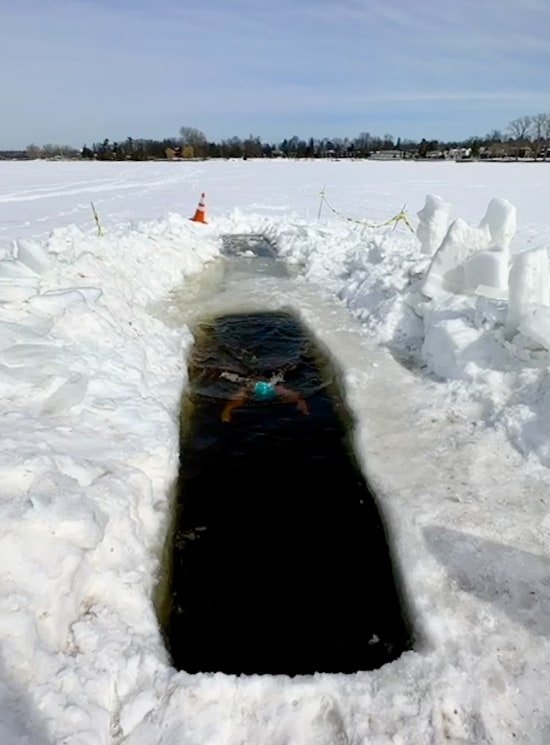
As I took my first breast stroke, my head and face were slammed with the extra cold. I focused on my breathing, making sure I was holding my breath under water and breathing out when my head was up, watching out for the gasp reflex, something that should not have been an issue having taken the time to acclimatize, but always worth watching out for. I noticed that the "swim lane" was a tad narrow and I couldn't really get a full arm stroke in, but that was the least of my concerns demanding attention.

The last time I did my cold water immersion, I never put my head or face in the water, keeping my head in a nice warm toque. This time, I felt the penetrating cold much more deeply, as though every time I put my head under water, I was being slammed with a massive ice cream headache. On previous cold water swims in the ocean, I had found that the act of swimming was enough to generate some heat, which allowed me to extend my time in the cold water. If anything, swimming made it worse in the ice cold water, which I later figured out had dropped to lower than 0C. This time it was closer to -2C, which explains why I people were clearing ice crystals off the surface of the lane when I arrived. Apparently, it is possible to maintain a swimming hole on the ice... as long as there are people willing to clear away ice on the surface to keep it from forming and taking hold. There is even an axe at this location for when it gets even more solid. And each time I took a stroke, it was like I swishing my body with a new, fresh wave of cold. On top of that, the lane was so short I couldn't get more than 2 full strokes before having to turn around. I couldn't get any real moment with my swim. For all these reasons, swimming did NOT making it easier. Quite the opposite. It was NOT a pleasant experience.
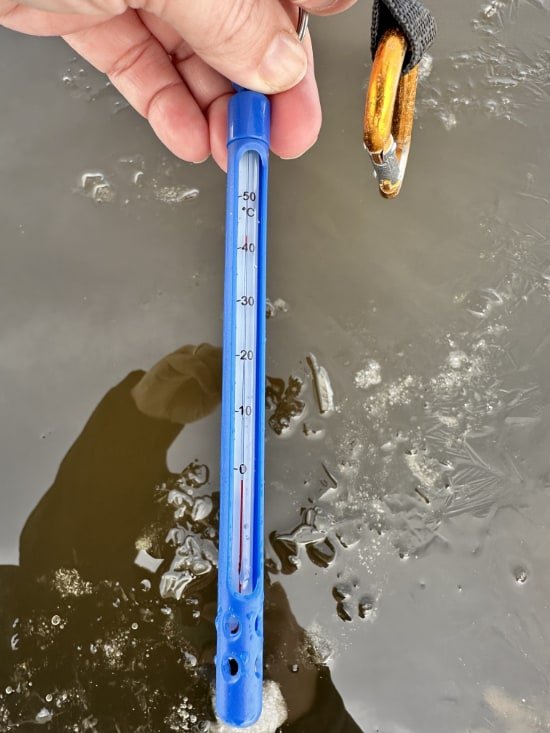
Finishing the Immersion Strong
After having swum a few "laps," which felt like a very long time, I checked my watch and realized I had only been swimming for a mere 2 minutes. I said, "Nuts to this," and decided to stop swimming, having been in the water for 5 minutes at that point. I wanted to finish strong though, and I wasn't at the point of shivering, so I decided to slow down, and do some calming breathing for a couple more minutes before getting out of the water. My total time in was 7 minutes, 2 minutes more than my last immersion.
Recovering from the Cold Water Swim
As I got out of the, an icy wind picked up. It was not idea, but I still felt warmer out of the water than I did in it. I immediately sat in my chair and started to pat myself dry. My limbs were numb, and this time I could tell that my motor function was much more compromised, as I struggled to pull on socks and clothes. Thankfully, I had my safety partner there to hand me items as needed. After getting dressed, I had a quick sip of tea, packed up my chair, and walked back to toward the car taking a brisk pace to help me warm up. At the 8-minute mark, I started to shiver. I was pleased that this after-drop was a full minute later than last time, as it indicates some progress, I also had a much more violent shivering reaction as part of it as well.
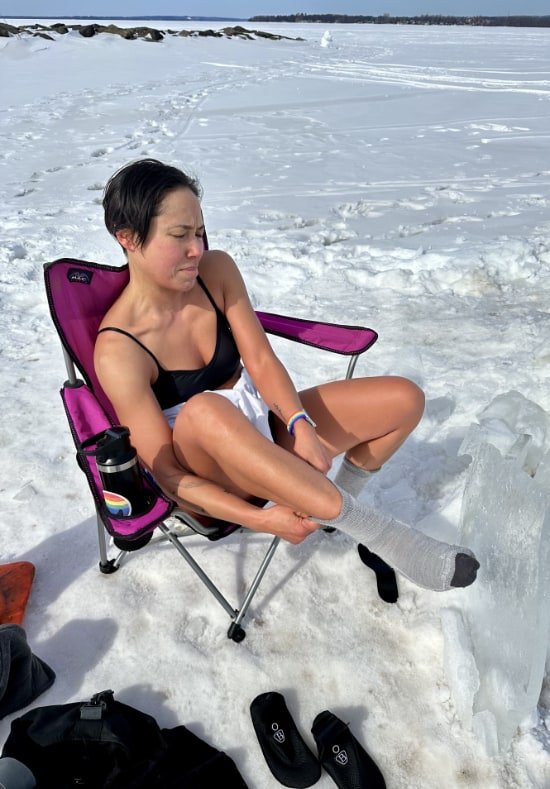
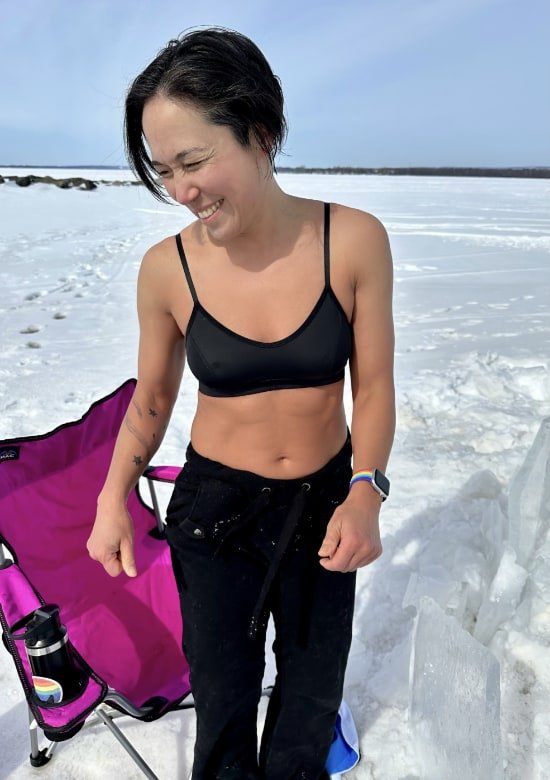
Shivering is the body's way of generating heat naturally when heat is needed. My decision not to use the heat warmers was motivated by wanting to help develop my body's ability to generate this heat on its own. Boy did it ever! I was quivering uncontrollably by the time I got back to the car, teeth chattering so hard that it was hard to speak. As we walked, a curious woman asked me about doing the cold immersion, and as much as I wanted to share my experience, I also did not have the cognitive ability to articulate anything beyond, "I'm sorry, I really need to get back to the car and warm up." I somehow had enough capacity to tell her to check out my blog though. I call that a win.
Sitting in the car with my friend, I knew I was going to need longer to recover so that I could drive home safely. I asked her to keep me in check, making sure that I was coherent and not slurring words before I tried to drive. Sometimes a high level of impairment from the cold can keep a person from being objective about how "recovered" they are, and I wanted to have a safety check in place ahead of time, in case I got to that place. While I had no delusions that I was ready to drive sooner than I was, I was definitely cognitively impaired, and it wasn't till I had totally stopped shivering, after spending 5 minutes walking back to the car, and 15 minutes rewarming in the car with heat and seat warmer blasting, that I felt ready to drive.
My Takeaways
It was interesting noting that swimming in the ice swimming lane was a much, much more challenging experience than simply immersing to the neck. This was definitely my most important takeaway. The greater impact of the cold on my from the swim, along with the other factors such as increased time in the water, and lower temperature, reinforced the importance of having a safety parter who understands everything that is involved in being a safety for someone doing a cold water immersion. Having plenty of time for recovery before driving after any cold water session in which I push my limits a little more is also a good idea. My recovery was significantly longer than last time and if I had been in a rush to go anywhere and drove prematurely, I would have been driving impaired, something akin to driving after a few drinks. I think next time, I might just have the personal warmers on hand just in case I feel like I need them. And lastly, I think the next time I go for a cold water immersion, I might just do a more relaxed version, perhaps a standard immersion with a breath hold at the end.
If you're interested in giving cold water immersions or swimming a try and live in the Vancouver area, check out my mentor Roberta Cenedese's cold water training sessions.
Now over to you. Have you any experience or interest in cold water swimming? Please share your thoughts in the comments.
